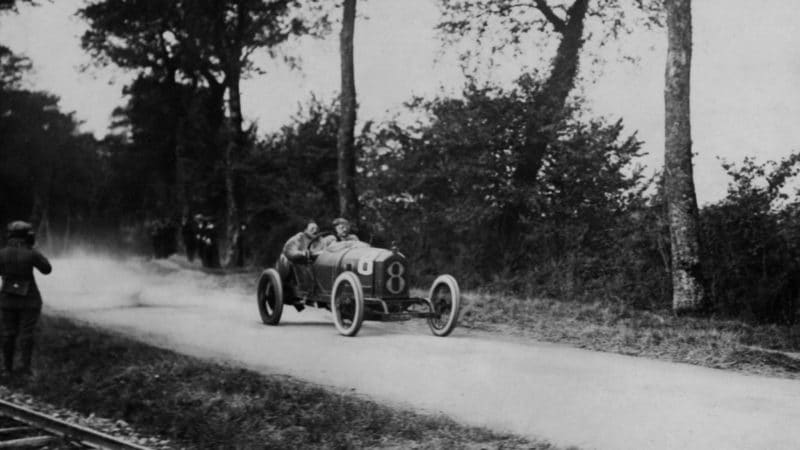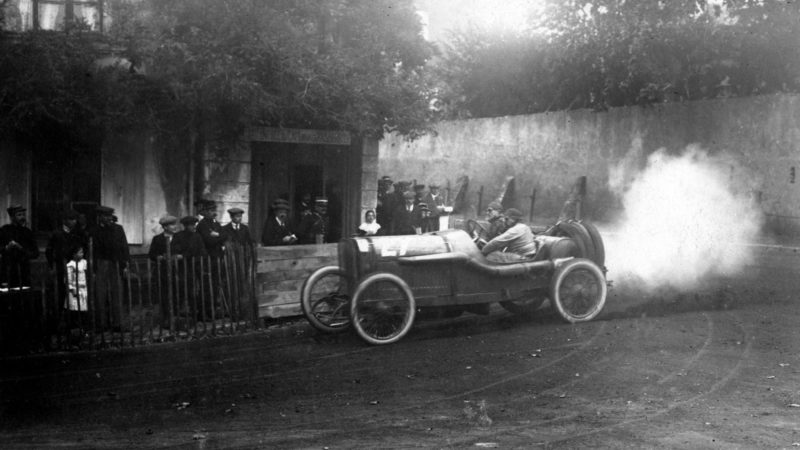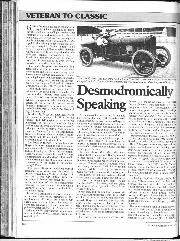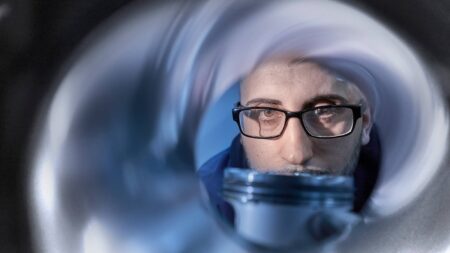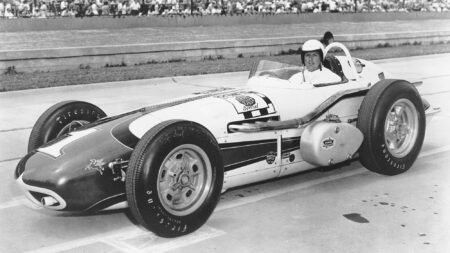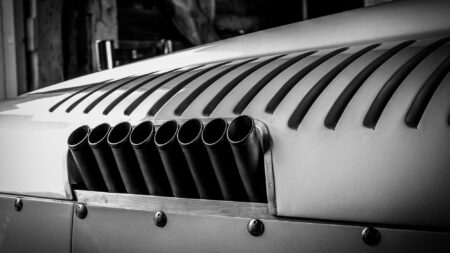Come the Dieppe race and Peugeot’s faith in Les Charlatans was rewarded, the L-76 beat the aforementioned Fiat by 13-minutes. It went on to win the second French Grand Prix in that year, the Coupe de la Sarthe, held at Le Mans. The Voiturrete class of the latter race, known as the Coupe de l’Auto, was also won by a three-litre version, the L-3. Topping off the year, two L-76s competed the Indy 500 in spring 1913, with Jules Goux becoming the first non-American driver to win the event.
While the 1912 car laid the groundwork in the innovation stakes, it would be the 1913 machines that really upped the ante. With the Grand Prix rules changed to a fuel consumption formula, Henry penned a new, 5.6 litre engine and matching 3.0-litre for voiturettes. This took the concept to a new level; the original shaft and bevel gear drive for the cams was replaced with a spur gear drive, while the valves train was also further improved. Lower down the engine, a dry-sump system was used for the first time- improving both lubrication and helping lower the car’s centre of gravity, while a two-piece, three main bearing crankshaft with a double row ball bearing in the centre and single row bearings at either end, was developed.
War would intervene in Peugeot’s winning streak (and take the life of Boillot in 1916, by then a fighter pilot) but nonetheless, its cars secured 15 victories in 19 races for Grand Prix machines between 1912 and 1919. One of the 3.0-litre cars, driven by Dario Resta, also won the 1916 Indy 500. Les Charlatans changed the game in terms of racing engine design, and by 1913, various other manufacturers were already trying to copy their innovations.
On this last point, there is anecdotal evidence that Sunbeam was a direct beneficiary of Peugeot’s technology. Sunbeam’s then chief engineer, Louis Herve Coatalen, managed to get his hands on a 1913 3.0 litre car when Resta, a friend of his, thoughtfully dropped the car off at his house on the way to a publicity event following its win at the Coupe de L’Auto. There, it was stripped and detailed drawings made of its innards. The following year, Sunbeam appeared at the Isle of Man Tourist Trophy with a 3.3 litre inline four DOHC engine which bore a remarkable resemblance to a certain French design.
